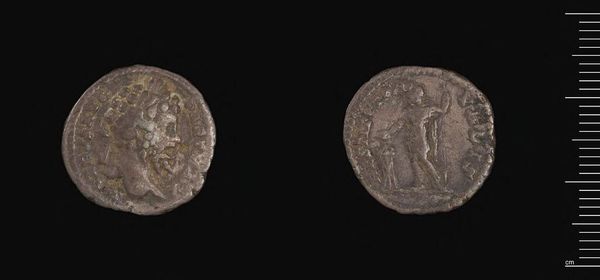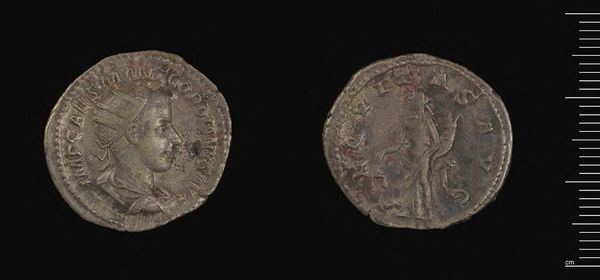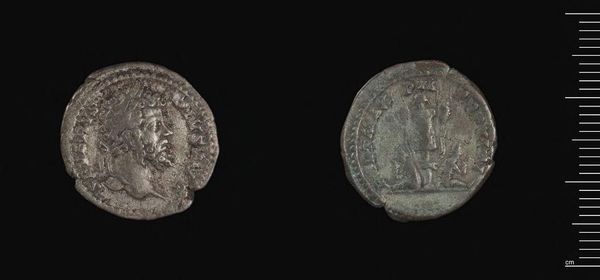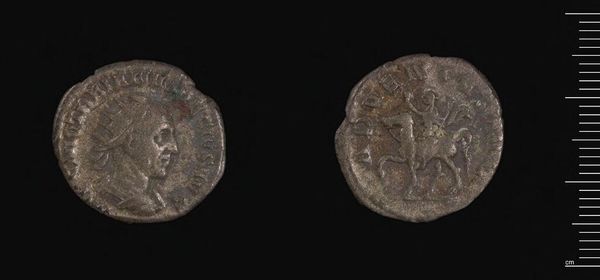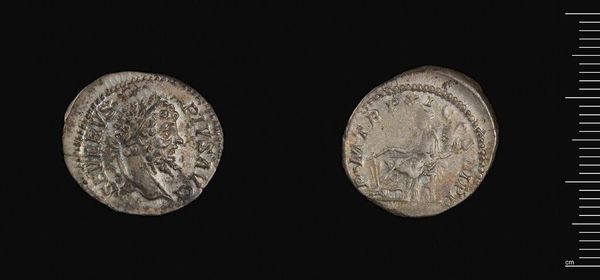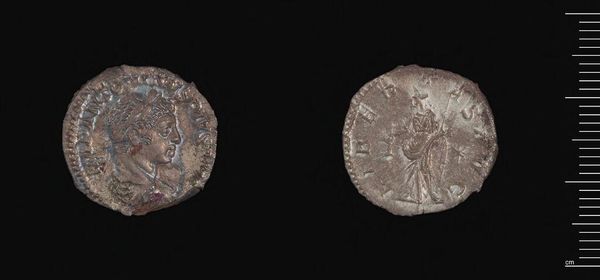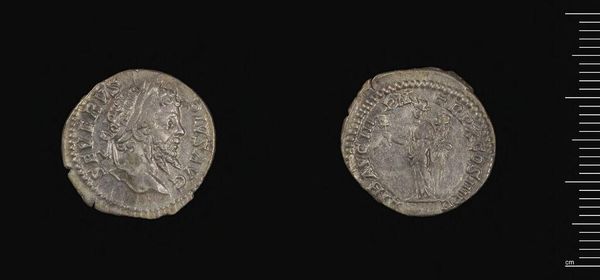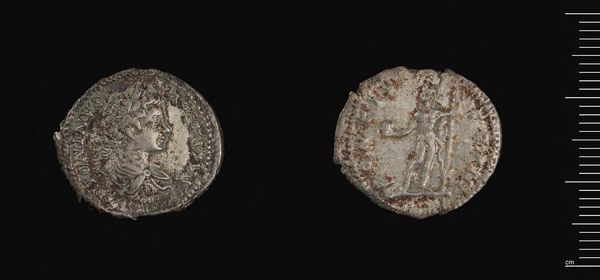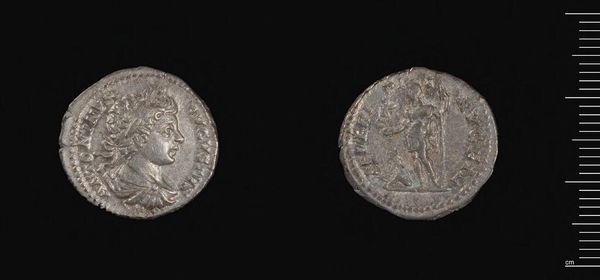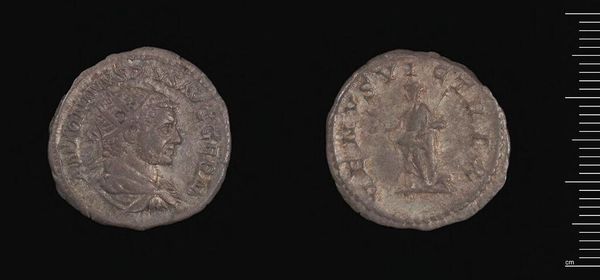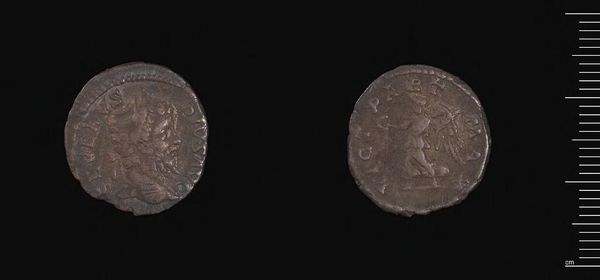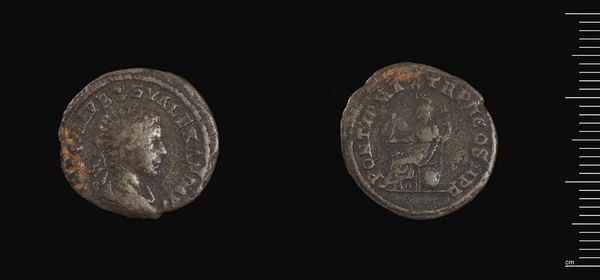
Dimensions: 2.55 g
Copyright: CC0 1.0
Curator: We’re looking at a denarius of Severus Alexander, currently held at the Harvard Art Museums. It offers a fascinating glimpse into the visual culture of the Roman Empire. Editor: It’s aged, certainly, but even with the wear, the figure on the reverse side makes a strong, graceful impression. Curator: Indeed. Severus Alexander, ruling from 222 to 235 AD, understood the power of imagery. His portrait on the obverse isn’t just a likeness; it’s a statement of imperial authority. Editor: And that figure? It feels like a deity. Perhaps Pax, the goddess of peace? The visual language speaks of prosperity, security… aspirations for the Empire. Curator: Precisely. Coins were a primary form of propaganda. Distributing these images, often with depictions of deities, communicated the emperor’s values and projected a desired image of Rome throughout the vast Empire. Editor: It's remarkable to see how these small objects, these carefully crafted symbols, were powerful tools of communication and control. Curator: Absolutely, a miniature representation of power and an interesting lens into the social fabric of the period. Editor: A truly potent image.
Comments
No comments
Be the first to comment and join the conversation on the ultimate creative platform.
